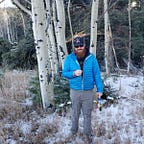“Probability of Tree Survival after wildfire in an interior pine forest of northern California: Effects of thinning and prescribed Fire” By Martin W. Ritchie et al.
Martin W. Ritchie and other researchers at the Black Mountain Experimental Forest (BMEF) analyze the survivability of trees in the experimental management plots the Cone Fire of 2002 burned. In conventional Forest management practice, is that if one reduces a forest stand’s density. By cutting out the understory and lower canopy trees, the forest will be less susceptible to Wildfire damage. However, with the unpredicted and unplanned nature of wildfires, there had been no evidence that such is the case.
In September of 2002, a wildfire started due North of the BMEF and burned ~653 Hectares overnight. This fire crossed three experimental fire management plots. Each plot had one half where thinning, and the project implemented a fire regiment, and the other half was left untouched by fire. M. W. Ritchie et al. found that
Observed changes in severity were remarkable and provide strong evidence that reducing fuels from thinning or thinning with prescribed fire can reduce wildfire intensity and severity in interior ponderosa pine stands. Both bole char and crown scorch were reduced substantially within all our treatment units. The combination of thinning followed by prescribed fire created a very effective treatment of that. Two of the three units were spotty and left most of the area unburned, despite the efforts of fire crews to burn out these areas.
As our knowledge of fire management increases and humans push further into fire-prone ecosystems, prescribed fire regiments will become a necessary consideration in suburban planning. Therefore, more studies akin to this and the case study from my previous post. Granted, this was a chance event that, in my opinion, provided a wealth of information in the field of Forest-management.
Lastly, what is the greater risk, maintaining fuel brakes around suburban areas or continuing to allow for human expansion into fire-prone ecosystems without a scientifically grounded mitigation plan?
